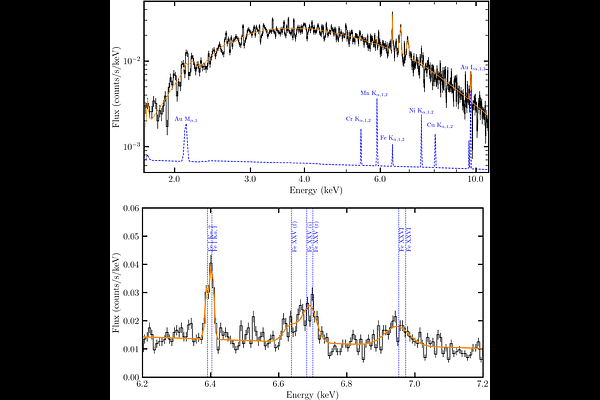XRISM Reveals a Remnant Torus in the Low-Luminosity AGN M81*

XRISM Reveals a Remnant Torus in the Low-Luminosity AGN M81*
Jon M. Miller Univ. of Michigan, Ehud Behar Technion, Hisamitsu Awaki Ehime Univ, Ann Hornschemeier NASA/GSFC, Jesse Bluem NASA/GSFC Johns Hopkins Univ, Luigi Gallo Saint Mary's Univ, Shogo B. Kobayashi Tokyo Univ. of Science, Richard Mushotzky Univ. of Maryland, College Park, Masanori Ohno Hiroshima Univ, Robert Petre NASA/GSFC, Kosuke Sato Saitama Univ QUP/KEK, Yuichi Terashima Ehime Univ, Mihoko Yukita NASA/GSFC Johns Hopkins Univ
AbstractUp to 40% of galaxies in the local universe host a low-luminosity active galactic nucleus (LLAGN), making it vital to understand this mode of black hole accretion. However, the presence or absence of Seyfert-like geometries - an accretion disk close to the black hole, an optical broad line region (BLR), and a molecular torus - remains uncertain owing to the low flux levels of sources within this class. Herein, we present an analysis of a XRISM/Resolve spectrum of M81*, the LLAGN in the heart of the nearby spiral galaxy M81. A weak, neutral Fe K emission line is detected and resolved into K$_{\alpha,1}$ and K$_{\alpha,2}$ components. It shows a negligible velocity shift, and weak broadening (FWHM$=460^{+260}_{-160}~{\rm km}~{\rm s}^{-1}$) that corresponds to an inner emission radius of ${\rm r} \geq 2.7\times 10^{4}~GM/c^{2}$ for likely inclinations. The Fe K$_{\alpha}$ line likely traces a torus. The upper limit on additional splitting of the Fe K$_{\alpha}$ line components translates to a limit on the local magnetic field of ${\rm B} \leq 3.5\times 10^{8}$ Gauss, assuming Zeeman splitting. The spectra also reveal ionized plasma(s) through He-like Fe XXV and H-like Fe XXVI emission lines. These can be fit equally well assuming photoionization and collisional excitation. The H-like Fe XXVI line is better described when a second component is included with a red-shift of ${\rm v} = 1600~{\rm km}~{\rm s}^{-1}$, but this addition is of marginal statistical significance. We discuss these results in the context of radiatively inefficient accretion flow models, magnetically arrested disks, and possible links to the Fermi bubbles in the Milky Way.